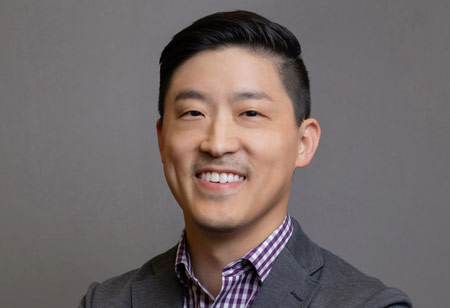Thank you for Subscribing to Healthcare Business Review Weekly Brief

Innovating Healthcare
Healthcare Business Review
The article is based on an interview with Joshua Liao, medical director of payment strategy at UW Medicine.
Major Challenges and Trends Impacting the Healthcare Sector
I see several important trends occurring in US health care. First, recent years have highlighted the connection between health care, public health, and other factors that affect health. While health care plays a key role in health outcomes, so do other things like income, education, housing, food, transportation, and other elements in individuals' lived environments. The healthcare community has an opportunity to go beyond historical precedent and partner with public health and community groups to address these factors.
Another trend is a growing recognition of the need to use multiple strategies to address equity in health care. The issue of health disparities isn't new. But there is nonetheless a need to increase the collective awareness about how to prioritize everything, including payment policy (something I work on) and care delivery models. This trend relates to the first, as efforts to address non-medical needs can play a role in driving health equity.
Though not a new trend, US health continues to grapple in many areas with issues of rising healthcare costs and suboptimal quality. Over the last decade, leaders have tried to address these issues using value-based payment and care delivery solutions. While these initiatives have done some good, improvements are also needed – that is, there's a need to reform value-based reforms. How to do so is a critical question. On one hand, tinkering with prior methods is unlikely to yield great benefits. On the other, there's also a risk of throwing the proverbial baby out with the bath water; even if one doesn't like the way value-based initiatives have been implemented, the focus on meaningful clinical, quality, and cost outcomes is nonetheless worthy of preserving.
Major Predicaments in the Healthcare Sector
The course of health care will depend in part on how the community handles the mega-trends I highlight above. How should clinicians and organizations address non-medical drivers of health, alone or alongside public health and community-based organizations? How can such efforts prioritize equity and seek to combat, rather than entrench or worsen, longstanding health inequities? How can these things be done amid the continued imperative to address healthcare quality and spending?
One can frame the work to be done as opportunities. But they also pose risks – risks of not doing what's necessary, risks of activity without progress, driven by multiple well-intentioned groups setting off in multiple directions rather than in a unified direction under coordinated action.
Latest Project and the Technological and Process Elements Leveraged to Make the Project Successful
Over the last three years, I’ve been honored to work with leaders in Washington to found and lead a partnership between my group at the University of Washington – The Value and Systems Science Lab – and the Washington Health Care Authority.
The partnership has led to a number of projects that have sought to answer key policy questions that affect the health of Washingtonians.
For instance, work has encompassed timely issues such as telemedicine amid and following the earliest phases of COVID-19 and definitions and analysis of primary care as a foundation for the health care system. Key enablers of this work include shared vision with state leaders, data-sharing capabilities, and agile project management approaches.
Adapting and Growing
‘When you love the work, you don’t cheat its demands.’ This idea has lighted my professional path across a decade of clinical training and years of additional academic apprenticeship. I have spent thousands of days and nights working to become a good leader, effective teacher, incisive thinker, rigorous researcher, and clear communicator. Across nothing short of ten thousand hours honing the craft.
Reflection on what I’m passionate about and what the world needs has helped me find areas of highest contribution
Though this sentiment might sound trite, it's been true for me. Reflection on what I'm passionate about and what the world needs has helped me find areas of the highest contribution. Committing my energy to those areas has led to a work – and, over time, a career – I love. These things have formed the foundation for things like interdisciplinary work, collaboration, mentorship, and networking. Doing all of this consistently (though imperfectly) over an extended period of time has given me perspective for navigating a rapidly evolving industry.
Bio
Dr. Liao is an internal medicine physician at the University of Washington (UW) where he serves as the Associate Chair for Health Systems in the Department of Medicine and faculty in the schools of School of Medicine and Public Health. He is also the enterprise-level Medical Director of Payment Strategy at UW Medicine, and an Adjunct Senior Fellow at the Leonard Davis Institute of Health Economics in the Wharton School at the University of Pennsylvania.
Dr. Liao has committed his career to improving health care payment and delivery. Equity in payment and care delivery redesign is a key focus of this mission and portfolio, which spans federally funded grants, policy evaluation, cross-disciplinary collaborations, and advocacy. Currently, he provides recommendations about payment models to the Secretary of the Department of Health and Human Services through service on the Physician-Focused Payment Model Technical Advisory Committee (PTAC). He advises state Medicaid programs on a variety of payment and delivery issues and serves on national committees and advisory groups for the American College of Physicians and the American Academy of Family Physicians. Previously, he was an advisor to the American Medical Association\'s RVU Update Committee (RUC), which provides recommendations to Medicare about how to value physician work when setting payment rates.









